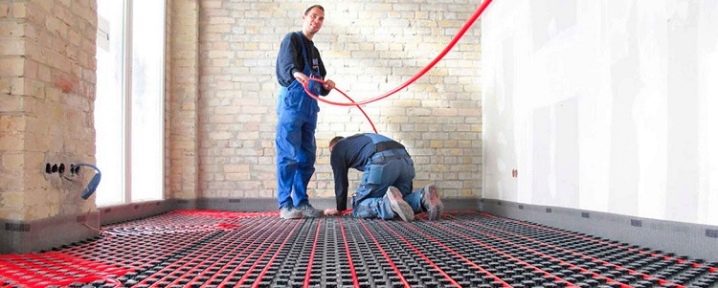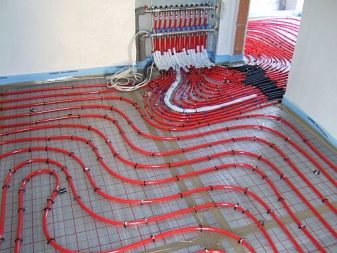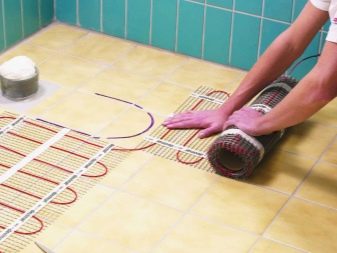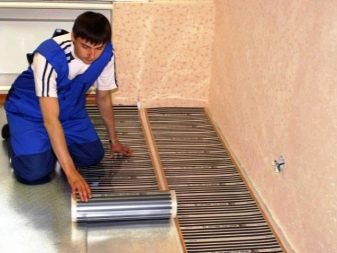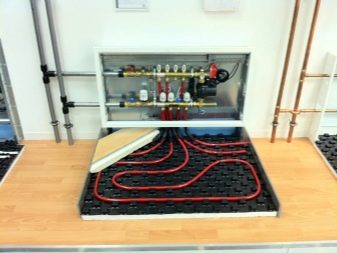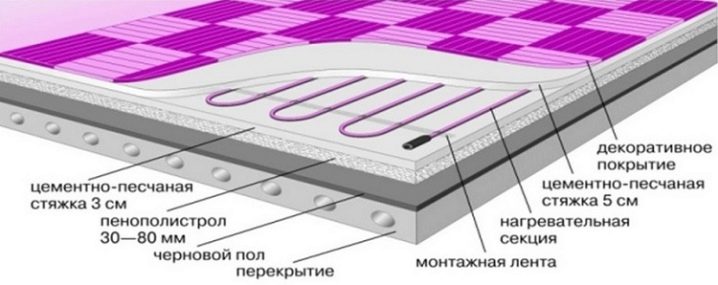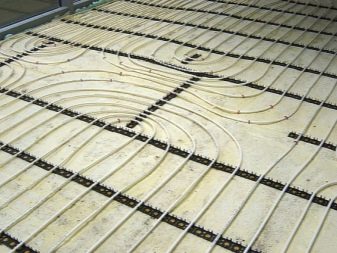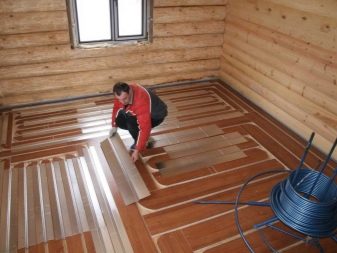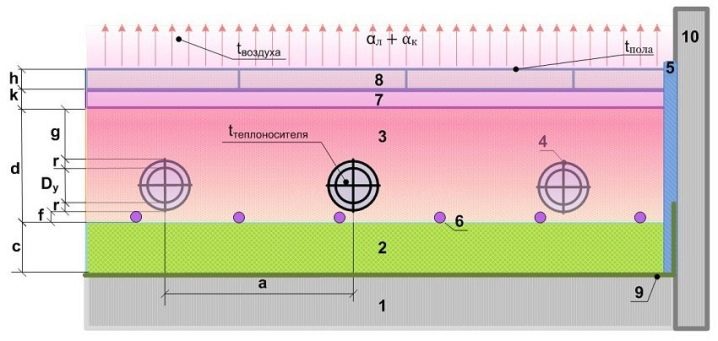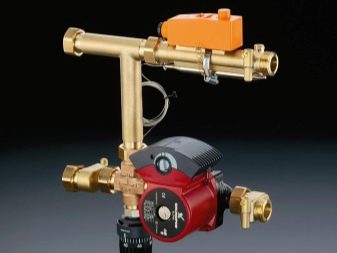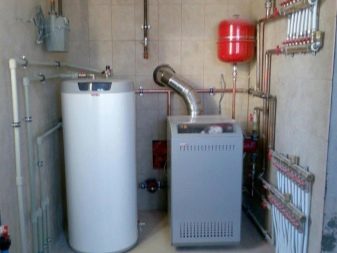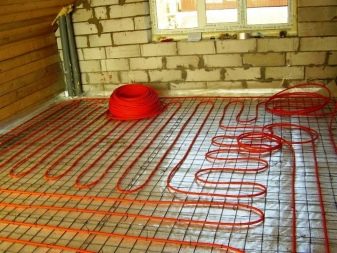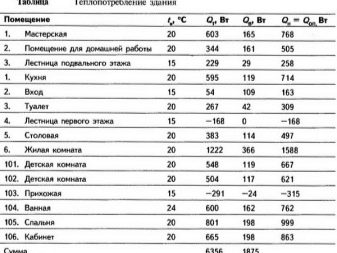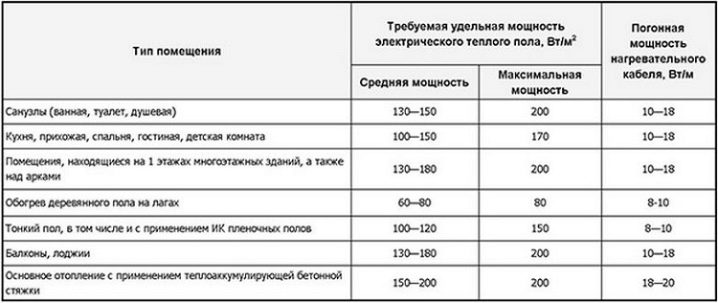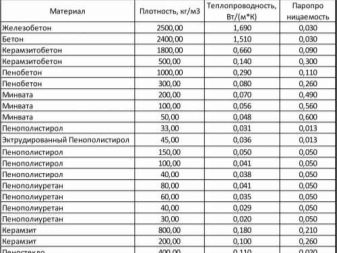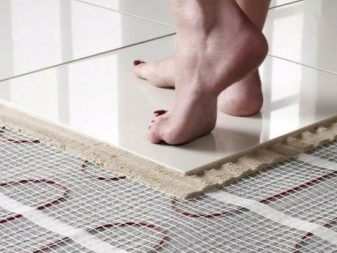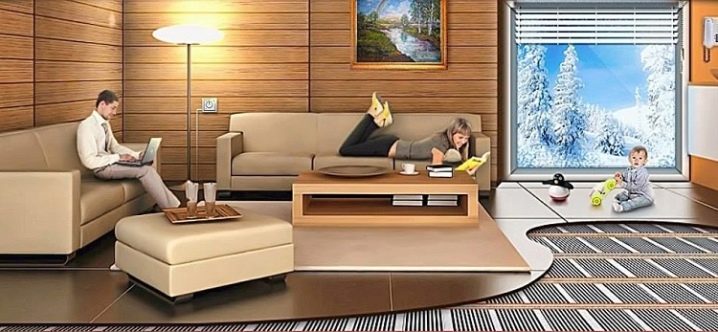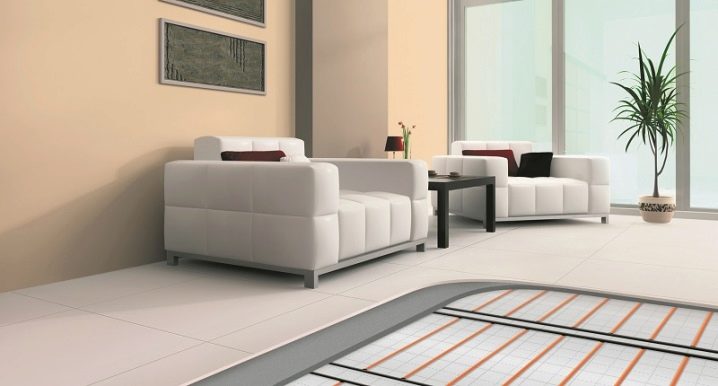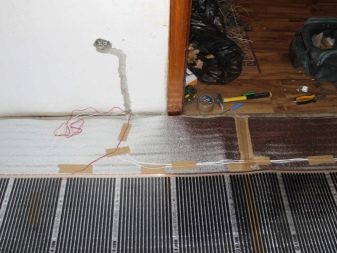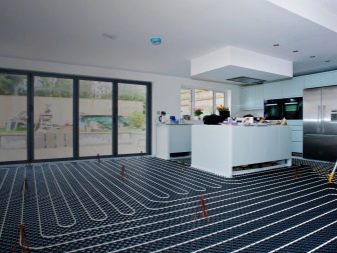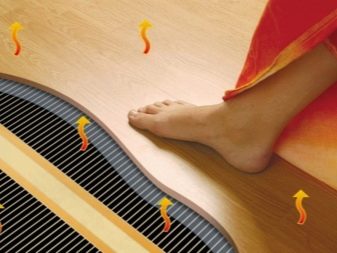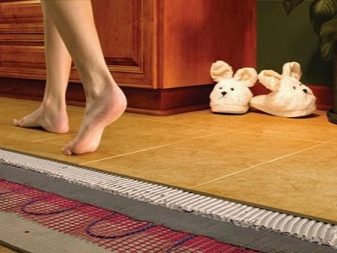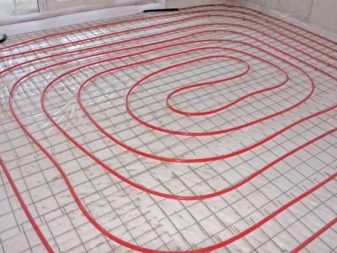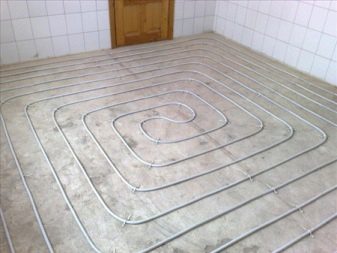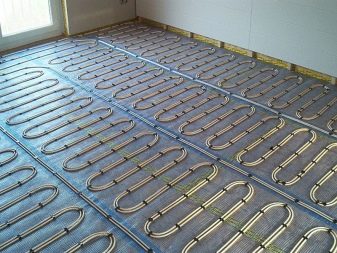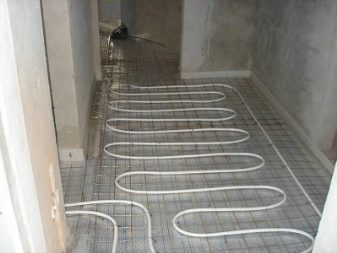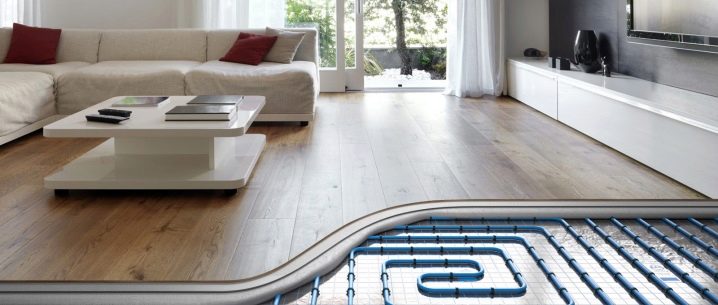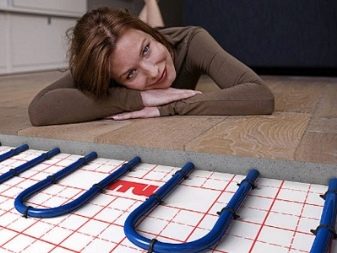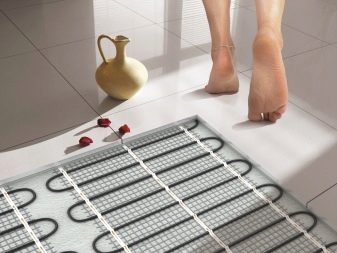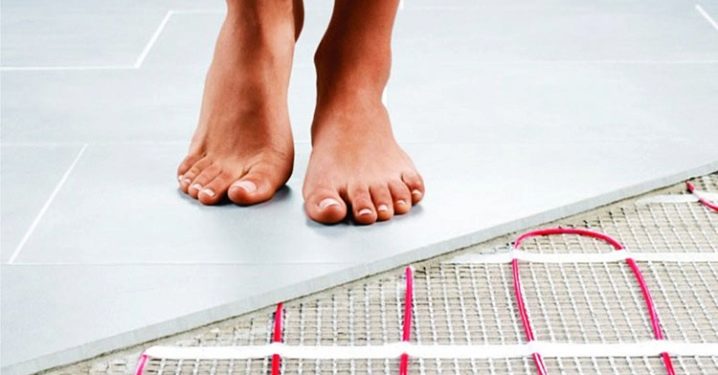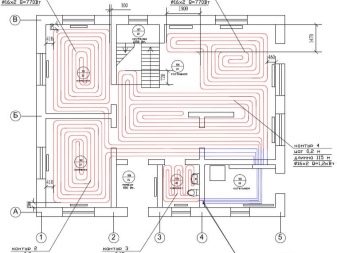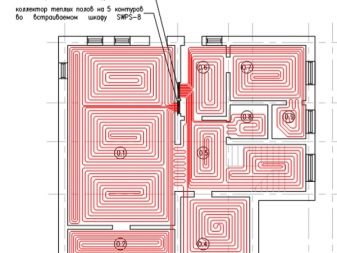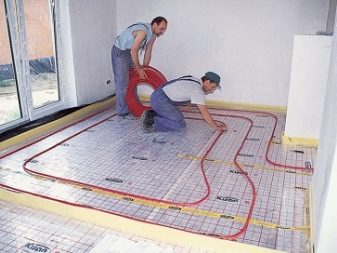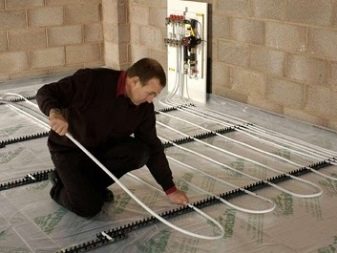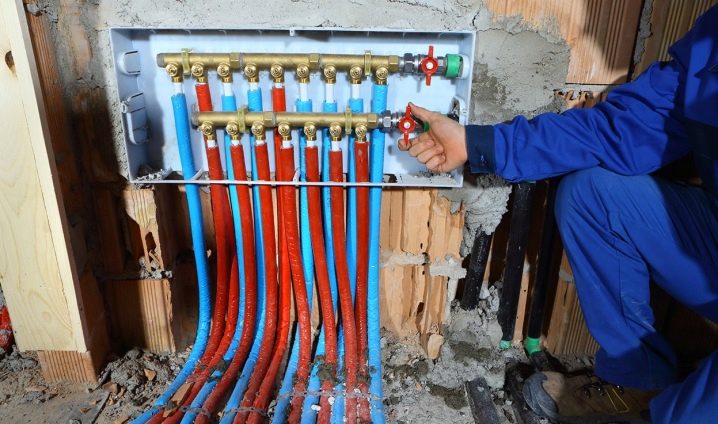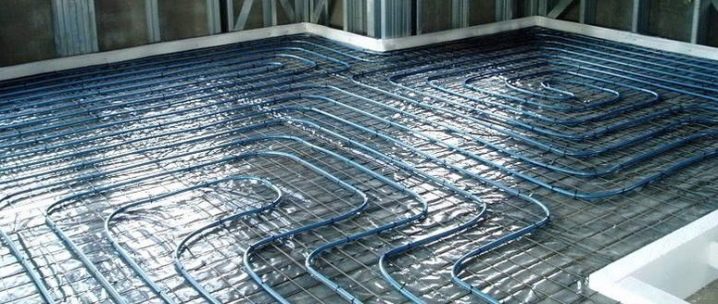Subtleties of the calculation of the heated floor
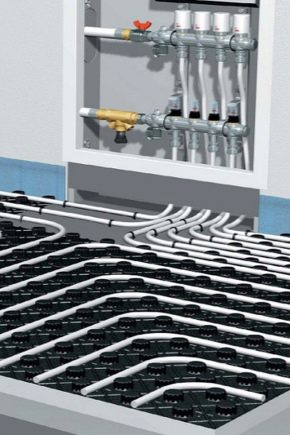
Home improvement should begin with the appropriate calculation. He will give an approximate idea of all the characteristics of the planned work and will reveal the question of the profitability of the idea as a whole. Especially the calculation is important in the case of installing underfloor heating in a private house.
Special features
Underfloor heating is heating equipment, and its stable operation is extremely important. It depends not only on the quality of installation, but also on the materials used. The most important component of the efficiency of the floor is a reliable calculation of all operating parameters. Even from school problems it is clear that it is difficult to calculate something, without understanding the meaning, so you need to understand the principles of the heating system and the characteristics of its placement. There are two types of warm floors:
- warm floors with water coolant;
- electric heated floors.
The design of water heated floors is arranged so that heating occurs due to the heat given off by heating circuits consisting of water pipes of small diameter. These pipes are laid under the floor surface and looped around the heating unit - the boiler that is responsible for heating. In most cases, the system is supplemented by devices that provide comfortable heating, as well as by means of regulation.
Underfloor heating using electricity generates the floor surface according to a similar technology. Instead of tubes, a special two-core cable is placed in the floor, which is a heat-emitting conductor. The intensity of radiation is regulated by a special thermostat.
You need to have an idea about how this system is located in a heated room. For ease of understanding, you need to imagine the floor as a layer cake. The first frame layer is usually a concrete slab on which a roll of waterproofing material spreads. Next, impose a material with low heat transfer resistance, for example, polystyrene foam,which is insulated with foil. Finally, on this all impose a tie, which are installed underfloor heating floor.
The calculation of warm floors is a rather serious task. Run it as carefully as possible. As a result, this will provide a complete picture of the required characteristics for the pump, the length of the heating pipes, the amount of heat radiation for specific cases, and much more. Of course, if you have money, you can pay for a range of services to specialists, but it is better to keep everything under control.
Despite the fact that the calculation is not easy, following the step-by-step instructions, it will not be difficult to handle it.
The calculation table in a private house
Heated floor can serve as the main source of heating in the room or a means for heating only the floor surface. Depending on what specific functions you plan to assign to the floor heating system, its heat transfer is calculated. In addition, the input data are also the geometric and structural characteristics of the room. First you need to figure out how much heat will be lost due to the design features of the room.Without knowing this parameter, it is impossible to understand how much heat the heating circuit should give, on which the calculation is generally oriented.
Only after this step you can pick up the rest of the system parameters, such as:
- required pump power;
- power of electric boiler or gas boiler;
- material and thickness of coolant tubes;
- contour length
In the event that the heating system in the house functions perfectly, and only a warming of the floor surface is required from the floor heating system, the main calculated value will be the footage of the heated room. The heat loss and the length of the laid pipe contours of a warm water floor will mainly depend on the geometry of the heated surface. To make the calculation absolutely accurate, you need to take into account the climate, construction features, number of storeys and much more. The result will be quite a complicated thermal calculation.
It may be that the consumer is not a professional, but still wants to save money on home improvement. In this case, it is possible to use the average heat consumption indicators for private houses. Heating of the house with the help of a heated floor has been used for a long time, and an expert table has formed a special table.It shows the necessary amount of heat for the intended room in which the heating circuits of the water floor will be placed.
Power formula
In most cases, underfloor heating is used as a system that replaces heating radiators. Then the calculation, of course, becomes more complicated, because you need to take into account all the factors. In order to be able to heat the entire internal volume of the room, you need to have information about the heat loss of the room. Only after that, knowing the power of the heating circuit, you can begin to design it. So, the calculation itself is as follows:
MK = 1.2 x Qwhere Mk is the required heat transfer power of the heating circuit, Q is the heat loss, and 1.2 is the error coefficient.
From the formula it is clear that the target parameter is the temperature of the coolant in the circuit, to determine which you need to calculate the heat loss. To determine them, you will need to go through the house with a tape measure. It is necessary to measure out the area and thickness of all enclosing objects: walls, floor, windows, doors and so on. To take into account the structure of the material of all objects, we need a coefficient characterizing the thermal conductivity of individual materials (λ).Accordingly, you need to know what made what is to be calculated, whether it is a wall, a door or a ceiling. All popular building materials and their coefficients are shown in the following table:
Heat loss are calculated separately for each protective element of the room, since each object has different properties. The calculation is made according to the following formula:
Q = (1 / R) x (tвн-tн) x (1 + ∑β) x Swhere R is the temperature resistance of the raw material from which the enclosing structure is made, t is the temperature of the structure, indices respectively imply external and internal temperature, S is the geometric area of the element, β is the climatic heat loss depending on the direction of the world that must be taken into account.
The calculated heat losses for individual elements are summarized as a result. Thus, the resulting total heat loss of a room is substituted into the formula for calculating Mk — the power of heat transfer from the circuit.
For an example, we will calculate the required heat transfer rate of a contour for a block room of 20x20 m, the width of which walls is 2.5 mm. Based on the fact that the thermal resistance of foam concrete blocks is 0.29 (W / mx K), we obtain the calculated value Rpb = 0.25 / 0.29 = 0.862 (W / mx K).The walls are plastered with a layer of 3 mm, which means that Rpcs = 0.03 / 0.29 = 0.1 (W / mx K) must be added to the resistance obtained. Hence, the total thermal resistance of the wall is Rst = 0.1 + 0.862 = 0.962 (W / mx K). Next, we calculate the heat loss by the above formula:
Q = (1 / 0.962) x (20 - (-10)) x (1 + 0.05) x 40 = 1309 W.
Absolutely the same calculate heat loss through the ceiling, door and windows. All the resulting sum and substitute in the formula for determining the power of the heating circuit. It is necessary to add 10% to the obtained value, which will make a calculation for air infiltration. Any calculator can handle this.
How to calculate the styling correctly?
After the power necessary for a heat-insulated floor is found out, it is possible to get acquainted with the subtleties of the location of its contour. Then it will only be necessary to calculate the necessary length of the contour, which will help to get an idea of the upcoming expenses. For clarity, you need to make a sketch on the graph paper. The drawing should be made taking into account pipe pitch and scale factors.
A pitch is a measured interval of voids between the pipes; it must be chosen according to several conditions:
- when moving along the floor, the human foot should not feel the temperature difference. So, if the step is too large, then the surface will be heated by stripes.
- The pitch should be chosen in such a way that the pipe performs its function as economically and efficiently as possible.
For error-free installation of the pipeline, it is necessary to understand the advantages and disadvantages of the types of installation used. Currently, for the installation of the heating pipeline use 4 schemes:
- "Snail (spiral)" - the most popular option, because this installation provides a uniform distribution of thermal energy. Location occurs from the periphery to the center with a constant decrease in the radius, and then in the other direction. When using this method, the step length can be of any size, ranging from 10 mm.
Also, this method is the easiest in terms of installation, there are no restrictions due to the shape of the room.
- "Snake" - a rather unpopular contour layout method. A huge disadvantage is that the connection to the power supply unit takes place on the one hand, therefore, a significant temperature difference is observed. The surface of the floor will be colder the further you are from the boiler. The second significant drawback of the "snake" is the complexity of installation. Such an arrangement provides for pipe bends at 180 degrees.As a consequence, the annular spacing should be increased to 200 mm, while 150 mm is considered to be a universal value.
- "Corner Snake". The spread of warm flow comes from the angle in which the boiler is located. The method is not popular because the temperature is distributed by a gradient, which, in fact, creates the effect of the "sun". The closer you are, the warmer.
- "Double Snake" is a modification of the usual "snake". The difference is that heat losses are compensated. This is due to the circulation of the flow in both directions. Laying in this way is just as complicated. "Snake" is used for small spaces, such as a bathroom.
All of the above methods can be combined with each other. "Snake" sometimes cover small areas, and "spiral" around the elements that do not need to be heated. Sometimes combined pipe laying methods provide the lowest material costs and minimal investment. Now, having the necessary information, you can proceed to the calculation of the required length of the pipeline. The calculation is carried out according to a simple formula:
L = 1,1 x S \ N. The above formula reflects the dependence of the length of the heating pipe (L) on the area of the circuit (S), taking into account step (N). The coefficient of 1.1 is necessary to account for the stock of the pipe under the bends.In the end, it is also necessary to take into account the segments that will connect the installation with the boiler with current and countercurrent.
To avoid misunderstandings, we calculate the length of the heating circuit for a living room of 25 square meters. m. In order to remove the restriction in the dimension of the step, we give preference to the method of spiral stacking and choose a step of 0.15 meters. In this case, it turns out that the length of the laid pipeline is L = 1.1 x 25 / 0.15 = 183.4 m.
Suppose a floor heating system operates from a comb, which is located 5 m from the contour. When calculating it is necessary to double this distance, since the collector has a counter-current. Therefore, the resulting contour length will be L = 183.4 + 5 + 5 = 193.4 m.
Professional Tips
Having dealt with the calculation, you can go with the results to the experts and specify their task. No need to hurry, do not be superfluous to get acquainted with some of the nuances. They can be encountered only by installing a heated floor not for the first time. Those who know this business well recommend:
- when drawing on the outline drawing try to figure out how to use as little pipe as possible. With a small length of the pipeline there will be no tangible resistances, and therefore pressure drops, that is, there will be no need to spend money on a powerful pump.
In general, a short pipe will require less cost.
- When the calculation of the length of the pipeline is completed, the obtained value should be compared with the allowable length of the contour. It depends on the diameter of the pipe to be laid. If the diameter is 16 mm, then the permissible length of the contour is 100 m, and if the diameter is 20 mm, then the limit will be 120 m.
- The interpipe step is taken in the optimal range, but depends on the diameter of the heating pipe.
- When designing the installation, it must be remembered that not all zones have the same heating need in the room, therefore, with windows and door structures, plan the location of the pipe more closely. This will provide intense heat there.
- In cases where the projected area exceeds 40 square meters. m, you need to connect a second circuit, as the work of single-circuit heated floor in large rooms is inefficient.
Thus, the calculation of the heated floor can be made independently.
It is recommended to perform the calculation and manually using the formulas, and on a special calculator, and then to compare the resulting values.
For more information on this, you can find out by watching the video below.
